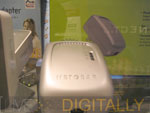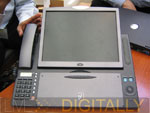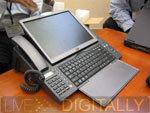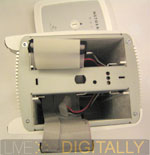 Wires aren’t feeling so well these days. Wireless this, wireless that, everyone wants to get rid of their wires. You’d think this to not be good news for our friends at Belden, global wire manufacturers. But as much as we’d like to free ourselves from wires, the need for quality wires will not go away just that easy. I visited the Belden booth at the Connections Conference unsure what I would find from a company that makes such a simple product.
Wires aren’t feeling so well these days. Wireless this, wireless that, everyone wants to get rid of their wires. You’d think this to not be good news for our friends at Belden, global wire manufacturers. But as much as we’d like to free ourselves from wires, the need for quality wires will not go away just that easy. I visited the Belden booth at the Connections Conference unsure what I would find from a company that makes such a simple product.
Was I wrong. I approached the booth and said “So you guys just make wires eh? Which one is your favorite?” The Belden woman pointed directly to a bundle and called it the banana bundle. She grabbed a 12” section which had two Cat5, two Coax, and one fiber wire all bundled together.
Continue reading










 I’ve been deemed a “computer guy” by my parents and friends simply because I know how to re-install Windows, add RAM, and use the T-Bird RSS feed reader. Being a computer guy means that I’m a free 24 hour help desk.
I’ve been deemed a “computer guy” by my parents and friends simply because I know how to re-install Windows, add RAM, and use the T-Bird RSS feed reader. Being a computer guy means that I’m a free 24 hour help desk. The Hyatt Regency, a beautiful hotel located south of San Francisco kicked off the
The Hyatt Regency, a beautiful hotel located south of San Francisco kicked off the 


 There’s a lot more to it, some interesting, some not, but it is safe to say that consumers are trending toward using the Internet as a reliable source for discovering and acquiring music. Both legal and questionable methods are alive, all to varying degrees of success. Fundamentally, the forces in play are enabling access to music in (predominantly) one of two fashions: downloadable files and streaming files.
There’s a lot more to it, some interesting, some not, but it is safe to say that consumers are trending toward using the Internet as a reliable source for discovering and acquiring music. Both legal and questionable methods are alive, all to varying degrees of success. Fundamentally, the forces in play are enabling access to music in (predominantly) one of two fashions: downloadable files and streaming files.
 So where’s the downside? The pesky iPod is out there messing it up for everyone. The iPod creates a model by which I need to own music, and I need access to it without an Internet connection. And with 4 million sales in Q4 of 2004, it doesn’t look like they are the pet rock of our generation. In fact, one might argue that an iPod is an essential element of living digitally. Okay, fine, so Rhapsody and the others will launch a download service to complement the streaming service. Done!
So where’s the downside? The pesky iPod is out there messing it up for everyone. The iPod creates a model by which I need to own music, and I need access to it without an Internet connection. And with 4 million sales in Q4 of 2004, it doesn’t look like they are the pet rock of our generation. In fact, one might argue that an iPod is an essential element of living digitally. Okay, fine, so Rhapsody and the others will launch a download service to complement the streaming service. Done!